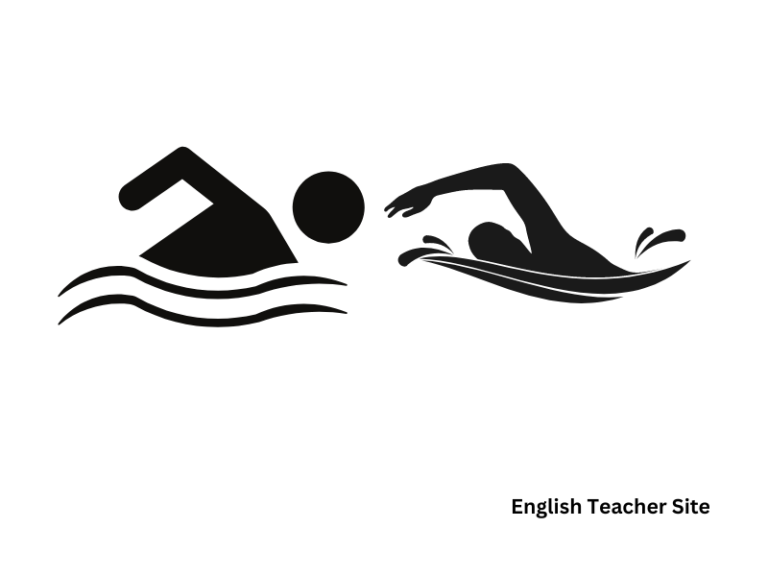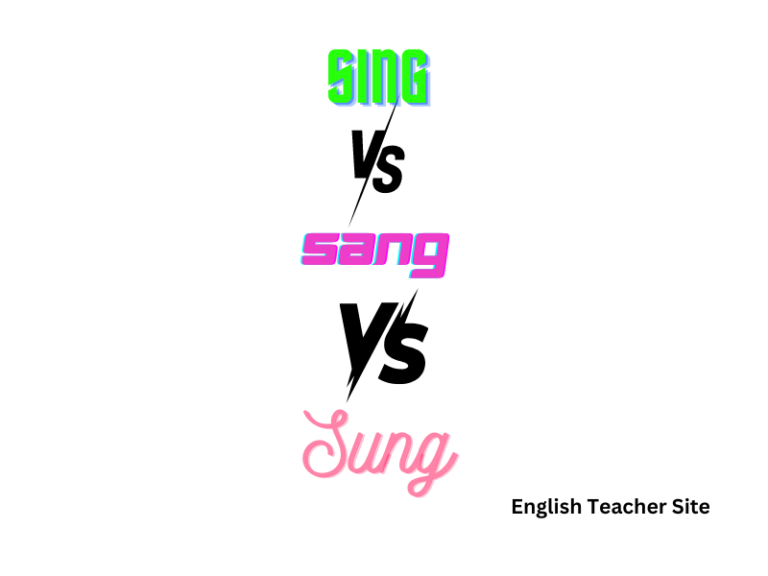Whats the Past Tense of Sew: Sewed vs. Sewn Explained

- “Sew” has two past forms: “sewed” for simple past and “sewn” for past participle.
- “Sewed” is used on its own, while “sewn” requires an auxiliary verb.
- Correct usage depends on context and whether an auxiliary verb is present.
The simple past tense “sewed” is used to describe an action that was completed in the past without any auxiliary verbs. On the other hand, “sewn” is the past participle form and is generally used with an auxiliary verb, such as “has,” “have,” or “had.” This distinction is essential, as it affects the verb’s placement in a sentence and the meaning conveyed. For instance, “I sewed a dress” implies that the action was completed in the past, while “The dress has been sewn” indicates that the action was completed at some time in the past relative to the present.
What’s the Past Tense of Sew: Sewed or Sewn?
When it comes to the verb “sew,” there are two distinct past tense forms that are used in different grammatical contexts: sewed and sewn. The choice between these forms depends on their function in a sentence.
Simple Past Tense:
- The simple past tense of “sew” is “sewed.” It is used to indicate an action that was completed at a specific point in the past. This form doesn’t require an auxiliary or helping verb.
Past Participle:
- The past participle of “sew” is “sewn.” This form is used with an auxiliary verb to form perfect tenses and the passive voice.
| Simple Past Tense | Past Participle |
|---|---|
| sewed | sewn (with auxiliary verb) |
Examples of simple past tense:
- She sewed a beautiful quilt last year.
- The tailor quickly sewed the torn dress.
Examples of past participle:
- The quilt has been sewn with great care.
- The dress had been sewn before the shop closed.
Usage in Sentences:
- Simple Past: “He sewed his initials onto his jacket.”
- Present Perfect: “She has sewn all the costumes for the play.”
It’s important to note that “sewed” can stand alone as a past form, whereas “sewn” cannot. “Sewn” must always be accompanied by a helper such as “has,” “have,” or “had.”
Verb Tense Table:
| Tense | Example Sentence |
|---|---|
| Simple Past | He sewed the patch onto his shirt. |
| Present Perfect | They have sewn a new lining into the coat. |
Understanding the Meaning of ‘Sew’ and Its Forms
Sew is a verb that refers to the craft of joining or repairing fabrics or garments with stitches made with a needle and thread. It is an essential skill that has been passed down through generations and remains integral in garment making and tailoring today. This word has several forms when used in different tenses.
The table below lists the basic forms of ‘sew’:
| Infinitive | Simple Past | Past Participle |
|---|---|---|
| to sew | sewed | sewn/sewed |
- The simple past tense of ‘sew’ is sewed.
- Example: She sewed a beautiful quilt last year.
- The past participle can be either sewn or sewed, although ‘sewn’ is more commonly used especially in American English.
- Example with ‘sewn’: The curtains she had sewn looked splendid.
- Example with ‘sewed’: He had sewed his own costume for the play.
“Sewn” is generally used when accompanying an auxiliary verb to create a perfect tense or a passive voice, whereas “sewed” is more typically found in simple past narratives. Both forms are correct, and the usage often depends on the dialect of English being spoken.
Difference Between Past Participle and Past Tense of ‘Sew’
Simple Past Tense:
- Sewed: This is the form used to describe an action of sewing that was completed in the past.
| Simple Past Tense | Usage Example |
|---|---|
| Sewed | She sewed a quilt yesterday. |
Past Participle:
- Sewn: Unlike ‘sewed,’ the past participle ‘sewn’ is irregular, not following standard conjugation.
| Past Participle | Usage Example |
|---|---|
| Sewn | The quilt has been sewn by hand. |
The past participle ‘sewn’ is often used with auxiliary verbs to form perfect tenses or the passive voice as demonstrated.
Aspects to remember:
- Past Tense: Indicates a completed action.
- Past Participle: Used with an auxiliary verb for perfect tenses or passive forms.
Grammar Tip for ‘Sew’
Selecting the appropriate form depends on the grammatical context of the sentence they are used in.
“Sewed” is used as:
- The simple past tense
- The past participle when combined with “have,” “has,” or “had” in some instances
“Sewn” is exclusively used as the past participle with an auxiliary verb.
Here are two tables that help illustrate their proper use:
| Simple Past Tense | Example Sentence |
|---|---|
| Sewed | She sewed a beautiful dress yesterday. |
| Past Participle | Example Sentence |
|---|---|
| Sewn | The curtains had been sewn by a professional. |
Remembering the following points can be useful:
- “Sewed” can stand alone as the past tense or be used with a helping verb.
- “Sewn” must always be accompanied by a helper verb like “has,” “have,” or “had.”
- Use sewed when discussing the action in the past without a helper verb.
- Use sewn after auxiliary verbs for a perfect tense construction.
Examples of Present Tense Verb ‘Sew’ in Context
The verb ‘sew’ is no exception. It describes the action of joining fabric pieces with thread. Here are examples showing how ‘sew’ is used in present tense sentences, which denote actions currently taking place or habitual actions.
In simple present tense, “sew” can appear as:
- He/She sews patches onto their jacket.
- It sews the fabric smoothly.
When describing a habitual action, it might look like this:
- They sew their own clothes every weekend.
- She always sews her quilts by hand.
For sentences implicating a state or action in progress, the present continuous form ‘sewing’ is used:
- He is sewing a button on his shirt.
- They are sewing costumes for the play.
Here we can see the term in different contexts:
| Subject | Present Simple | Present Continuous |
|---|---|---|
| He/She | sews a hem | is sewing a dress |
| It | sews reliably | is sewing rapidly |
| They | sew regularly | are sewing together |
Examples of Past Tense ‘Sewed’ in Context
Instances of ‘Sewed’ in Sentences:
- He sewed the patch onto his jacket last night.
- The volunteers sewed quilts for the homeless shelter.
- She sewed her first dress when she was twelve.
Application in Narratives:
- They sewed their costumes for the school play.
- In the novel, the character sewed their own wedding gown.
Usage in Different Contexts
When it comes to using ‘sewed’ in context, the usage varies based on the narrative and timeframe. Here’s a closer look:
In Personal Anecdotes:
| Subject | Sentence Example |
|---|---|
| Third-person singular | She sewed her prom dress by herself. |
| Third-person plural | They sewed curtains for the new house. |
In Historical Accounts:
| Event Description | Example Usage |
|---|---|
| Describing a past event | Tailors often sewed garments by hand. |
| Narrating a sequence of completed actions | After cutting the fabric, she sewed the pieces together. |
These examples exemplify the simple past tense usage of ‘sewed,’ demonstrating completed actions without the assistance of auxiliary verbs.
Examples of Past Participle ‘Sewn’ in Context
Table 1: Past Perfect Tense with ‘Sewn’
| Subject | Auxiliary Verb (Past) | Past Participle | Rest of the sentence |
|---|---|---|---|
| She | had | sewn | the patches onto her jacket. |
| They | had | sewn | the curtains before we arrived. |
| The tailor | had | sewn | the suit to perfection. |
Here, “sewn” works with “had” to form the past perfect tense, showing that the sewing was completed before another action or a specific time in the past.
Table 2: Present Perfect Tense with ‘Sewn’
| Subject | Auxiliary Verb (Present) | Past Participle | Rest of the sentence |
|---|---|---|---|
| I | have | sewn | three dresses this month. |
| You | have | sewn | the buttons on tightly. |
| We | have | sewn | the quilt together. |
In these examples, “sewn” is combined with “have” to form the present perfect tense, conveying that an action was completed at some unspecified time before now.
Usage in Passive Voice
Here are some examples where “sewn” is used in the passive voice:
- The wedding gown was beautifully sewn by the designer.
- The torn pages were neatly sewn back into the book.
- “Sewn” is used after “has,” “have,” or “had” to show completion:
- The flags have been sewn for the parade.
- In passive sentences, “sewn” describes an object acted upon:
- The kite had been sewn with great care.
Synonyms of ‘Sew’
Common Synonyms:
- Stitch: Refers to the act of sewing or the thread loop itself.
- Suture: Often used in medical contexts, signifying the stitches used to close wounds.
Artistic Synonyms:
- Embroider: To decorate fabric with needlework.
- Knit: To make fabric by interlocking loops of wool or other yarn.
Here is a breakdown in table format for clarity:
| Action-Oriented Synonyms | Decorative Synonyms |
|---|---|
| Stitch | Embroider |
| Suture | Knit |
Repair-Focused Synonyms:
- Patch: To mend or reinforce with a piece of cloth.
- Darn: To repair holes or worn areas in fabric with stitching.
Table of nuanced synonyms:
| Synonyms for Repair | Synonyms for Creation |
|---|---|
| Patch | Fabricate (in a broad sense) |
| Darn | Assemble (when bringing pieces together) |
Idioms Related to ‘Sew’
| Idiom | Meaning |
|---|---|
| A stitch in time saves nine | Taking care of a problem early will prevent it from becoming bigger. |
| To sew one’s wild oats | To indulge in carefree behavior or wild living, typically when young. |
- A stitch in time saves nine implies the value of timely intervention.
- To sew one’s wild oats usually refers to sowing seeds of one’s less responsible days.
| Usage in a Sentence | Idiom |
|---|---|
| She made sure to fix the small rip in her jacket immediately, knowing that a stitch in time saves nine. | A stitch in time saves nine |
| After traveling the world for a few years, he finally settled down to start a family, having sewn his wild oats. | To sew one’s wild oats |
Origin of the Verb ‘Sew’
The verb ‘sew’ is firmly rooted in the fabric of the English language. It originates from the Old English ‘siwian’, which means to stitch or mend with a needle and thread. The activity of sewing has been an essential skill through human history, often associated with both necessity and artistry. The term has seen a natural evolution across centuries, transitioning from its Old English form to Middle English ‘sewen’ before arriving at its contemporary form.
| Old English | Middle English | Modern English |
|---|---|---|
| siwian | sewen | sew |
Sewing techniques have been perpetuated and diversified through generations, which parallels the versatility of the verb’s grammatical forms. Given that sewing is an activity that literally threads through human history, it’s not surprising that ‘sew’ possesses both regular and irregular past tense forms—’sewed’ and ‘sewn’, respectively. These variations coexist and are used according to context within the English language.
- Regular Past Tense: Sewed
- Example: She sewed her dress yesterday.
- Irregular Past Participle: Sewn
- Example: The curtains have been sewn to perfection.
In contemporary usage, ‘sewn’ is often preferred as the past participle when accompanied by an auxiliary verb, whereas ‘sewed’ is commonly used for the simple past tense. The prevalence of ‘sewn’ in the participle form illuminates a linguistic preference for irregular conjugation in this context, underscoring the nuanced behavior of English verb forms.
Sources
Harper, Douglas. “Etymology of sew.” Online Etymology Dictionary, https://www.etymonline.com/word/sew. Accessed 6 March, 2023.
My name is Khamis Maiouf. I am the creator of the English Teacher Site, dedicated to providing valuable resources and insights for students around the world. With a passion for education and a commitment to helping students enhance their skills, I aim to make English teaching more effective and enjoyable for both educators and students.






